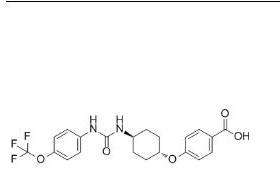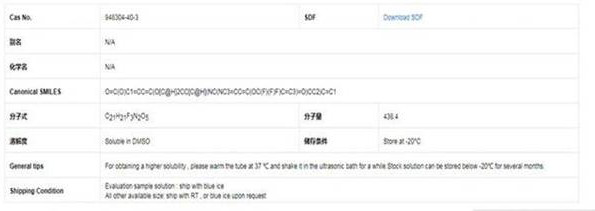Application of hydrolase inhibitor t-TUCB in Alzheimer disease
A technology of inhibitors and hydrolytic enzymes, applied in the field of pharmacology, can solve the problems of complex etiology, lack of a safe and effective drug, and unclear pathogenesis, and achieve easy preparation, good oral bioavailability, and improve AD pathology The effect of features
- Summary
- Abstract
- Description
- Claims
- Application Information
AI Technical Summary
Problems solved by technology
Method used
Image
Examples
Embodiment Construction
[0019] The technical solutions in the embodiments of the present invention will be clearly and completely described below in conjunction with the embodiments of the present invention. Apparently, the described embodiments are only some of the embodiments of the present invention, not all of them. Based on the embodiments of the present invention, all other embodiments obtained by persons of ordinary skill in the art without making creative efforts belong to the protection scope of the present invention.
[0020] The invention provides a technical solution:
[0021] The application of hydrolase inhibitor t-TUCB in Alzheimer's disease comprises the following steps:
[0022] S1. Gastrointestinal administration of 6-month-old 5XFAD Different doses of t-TUCB (0.5mg / kg, 1mg / kg, 2mg / mg) were administered to mice for a total of 8 weeks, and t-TUCB was dissolved in 40% PEG-400 solution prepared with normal saline;
[0023] S2. Then we killed the mice, took out their heads, and frozen...
PUM
 Login to View More
Login to View More Abstract
Description
Claims
Application Information
 Login to View More
Login to View More - R&D
- Intellectual Property
- Life Sciences
- Materials
- Tech Scout
- Unparalleled Data Quality
- Higher Quality Content
- 60% Fewer Hallucinations
Browse by: Latest US Patents, China's latest patents, Technical Efficacy Thesaurus, Application Domain, Technology Topic, Popular Technical Reports.
© 2025 PatSnap. All rights reserved.Legal|Privacy policy|Modern Slavery Act Transparency Statement|Sitemap|About US| Contact US: help@patsnap.com


